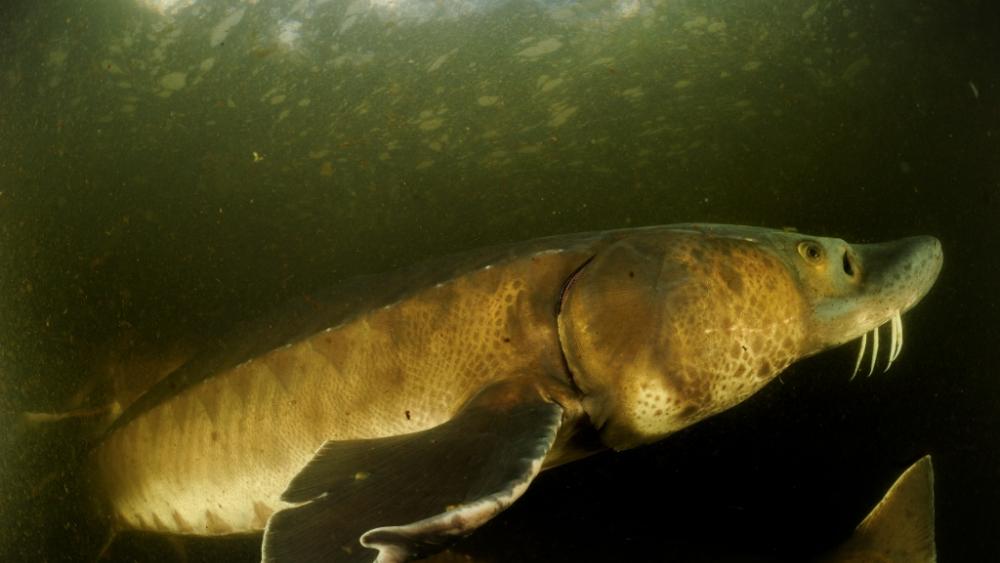Just one per cent of the Earth’s surface are filled with rivers and lakes but in those lakes and rivers live one third of all vertebrate species in the world.
Scientists from the Leibniz-Institute of Freshwater Ecology and Inland Fisheries (IGB) and international colleagues have now quantified the global decline of big freshwater animal and the numbers are frightening.
From 1970 to 2012, global populations of freshwater megafauna declined by 88 percent – twice the loss of vertebrate populations on land or in the ocean. Large fish species are particularly affected. And yet there remain large gaps in monitoring and conservation actions for freshwater megafauna, particularly in areas with high levels of biodiversity.
The European sturgeon (Acipenser sturio) has suffered the largest loss – its distribution range diminished by 99 percent. | Photo: Solvin Zankl
Freshwater megafauna include all freshwater animals that weigh 30 kilograms or more, such as species of river dolphins, beavers, crocodiles, giant turtles and sturgeons. The scientists compiled available time series data for 126 freshwater megafauna species worldwide, as well as the historical and contemporary geographic distribution data of 44 species in Europe and the USA.
“The results are alarming and confirm the fears of scientists involved in studying and protecting freshwater biodiversity,” says Sonja Jähnig, senior author of the study and expert for global change effects on river ecosystems at IGB.
From 1970 to 2012, global populations of freshwater megafauna declined by 88 percent, most notably in the Indomalaya (by 99 percent) and Palearctic (by 97 percent) realms – the former covering South and Southeast Asia and southern China, and the latter covering Europe, North Africa and most of Asia. Large fish species such as sturgeons, salmonids and giant catfishes are particularly threatened: with a 94 percent decline, followed by reptiles with 72 percent.
Two main threats: overexploitation and loss of free-flowing rivers
Overexploitation is the primary threat to freshwater megafauna as they are often targeted for meat, skin and eggs.
“Furthermore, the decline of large fish species is also attributed to the loss of free-flowing rivers as access to spawning and feeding grounds are often blocked by dams. Although the world’s large rivers have already been highly fragmented, another 3700 large dams are planned or under construction – this will exacerbate the river fragmentation even further. More than 800 of these planned dams are located in diversity hotspots of freshwater megafauna, including Amazon, Congo, Mekong and Ganges river basins,” says Fengzhi He, first author of the study and expert for diversity patterns and conservation of freshwater megafauna at IGB.
Successful conservation: sturgeons, beavers and the Irrawaddy river dolphin
Thanks to targeted conservation actions, populations of 13 megafauna species including the green sturgeon (Acipenser medirostris) and the American beaver (Castor canadensis) have been stable or even increasing in the USA. In Asia, the population of the Irrawaddy river dolphin (Orcaella brevirostris) in the Mekong basin has increased for the first time in twenty years. In Europe, efficient and large-scale conservation strategies seem to be more difficult to implement, arguably due to politic boarders and differences in environmental awareness among countries. Nevertheless, the Eurasian beaver (Castor fiber), for example, has now been reintroduced to many regions where it was extirpated. In Germany, IGB is working with international partners to reintroduce the two formerly native sturgeon species European sturgeon (Acipenser sturio) and Atlantic sturgeon (Acipenser oxyrinchus) to European waters.




